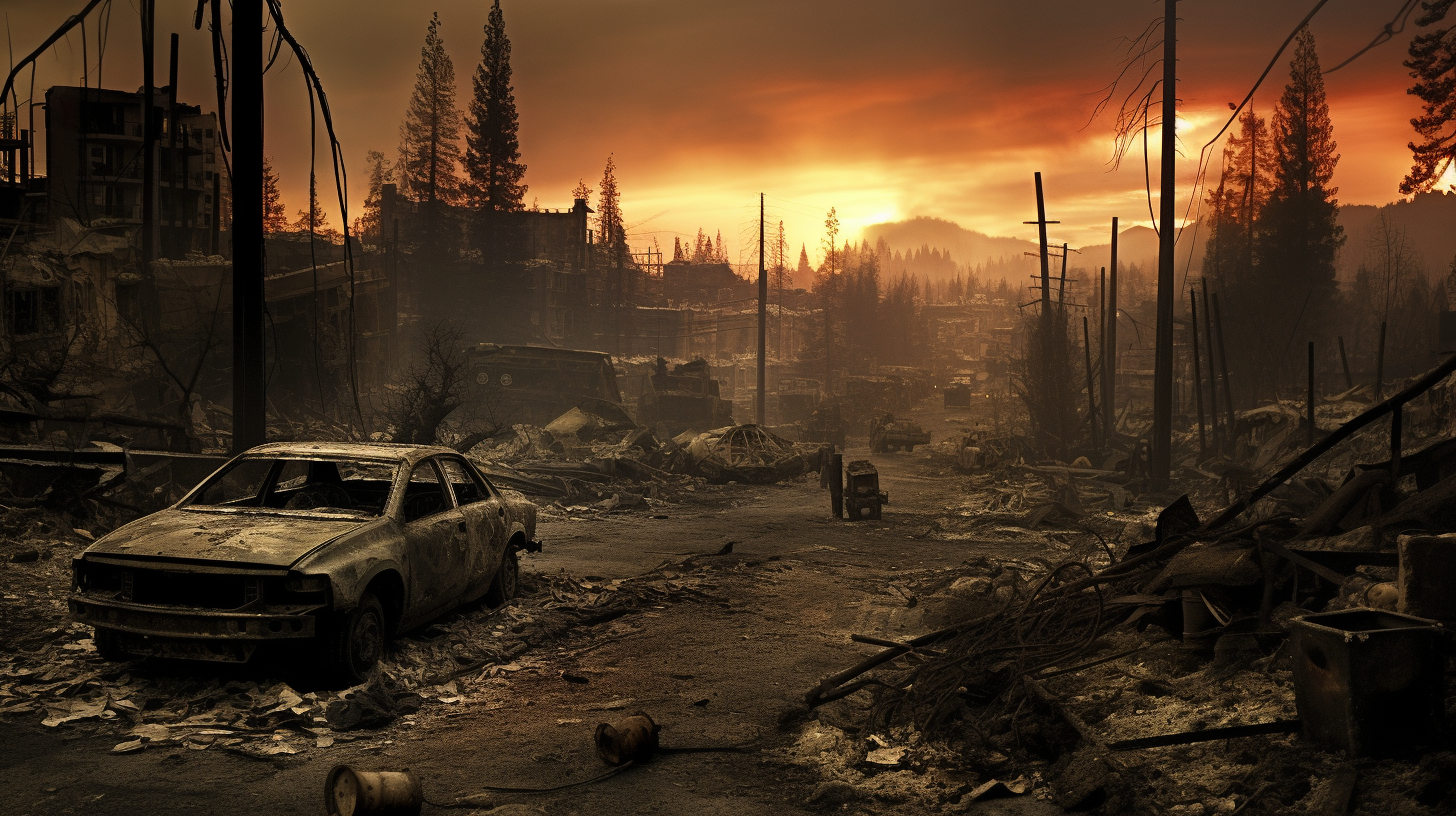In the aftermath of devastation, where the fiery curtain has fallen and the once verdant stages find themselves shrouded in the profound silence of destruction, stands humanity amid the aftermath of conflagration. ‘After the Fire – Life in the Ashes of a Scorched Earth’ peers into the abyss left in the wake of apocalyptic wildfires, journeying through landscapes somberly transformed from havens of life to the stark, haunting beauty of desolate terrains.
Ashen skies preside over the remnants of emaciated woodlands, where the soot-covered ground crunches underfoot and the air still whispers of combustion. Here, in the twilight of ecological mourning, one questions the stirrings of life—can resilience take root amidst this charcoal medium, or are these graveyards of nature’s splendor destined for an eternal hiatus from verdancy?
The narrative unfolds in layers of charcoal and ocher, each footprint in the soot a testament to the tenacity of survivors, both human and non-human alike. Yet, within this dystopian silence lies a deafening cry for acknowledgement. From the singular sprout braving the harsh reality atop an ash heap to the hybrid ecosystems emerging oddly amongst ruins, life, albeit in altered, twisted forms, claws its way out from the ashes.
Scientists once spoke of fire as renewal, a phoenix-like renaissance for centuries-old ecosystems. Today, however, as fires rage perennially, the theory of fire as a cleansing agent becomes tragically antiquated. Echoes of past scenery are the only specters waltzing in the charred theatrics of a landscape reduced to a dystopian diorama, a dire exhibition of warnings unheeded.
Yet, portents of continuance insinuate themselves with quiet insistence. The desperate fortitude of nature, in the face of relentless environmental sabotage, continues to astonish with its fragmented attempts at restitution. Microhabitats and rogue species now dot the ashen canvas, composing a bizarre mosaic of life that defies extinction. It’s a display of grit and adaptation, but at what cost and for how long?
Personal tales are etched in the scenery, as well. Survivors whisper their narratives, voices as feeble as the foliage struggling on the edge of existence—each one a poignant chronicle of dreams incinerated and of a future uncertain. Rural communities, once held in nature’s nurturing embrace, now grapple with their tragedies amidst forever altered terrains, their stories untold symphonies of resilience and loss.
Bringing our journey to a close, we ponder the remaining slivers of hope. Can these barren fields ever regain their lost symphony of life, or is this the beginning of an endless requiem, a world wherein the siren of rebirth is forever silenced? As with our previous contiguous narratives, we find ourselves trapped in the embrace of a harrowing purgatory, contemplating existence ‘After the Fire,’ where life clings precariously to the possibility of dawn, however illusory that may seem.
